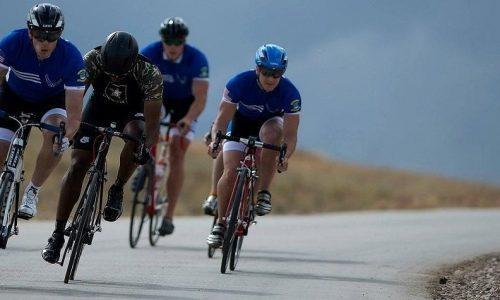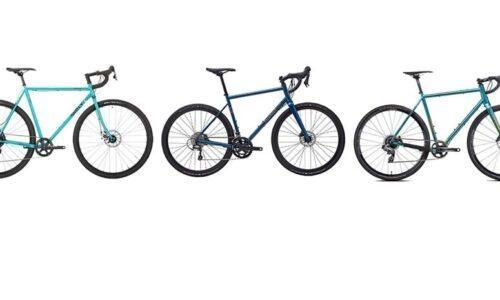A fat-bike is a bicycle with extremely wider tires, to enable this a manufacturer must avoid many obstacles through clever design in order that the wide wheels do not disrupt the ability of the rider to enjoy cycling the bike.
Issues such as the wider bottom bracket (necessitated by wider wheels) mean that the cranks become uncomfortably wide so they must be adjusted through clever design.
These developments are still being refined but we can now see many commercially available products and designs that are extremely well manufactured and offer excellent fat biking opportunities for every budget and terrain.
Fat biking has become such a phenomenon that subcategories have even emerged from what was already a very niche activity.
Fat-bikes have been commercially available for about 10 years as complete bikes with companies like Salsa and Surly being the first to produce usable complete fat-bikes.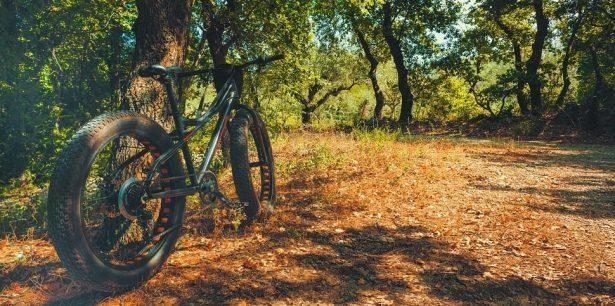
Before this, bikes were custom made and some used two normal width rims pinned together with two tires mounted side by side.
The history is filled with amazing ingenuity and a will to cycle over the worst terrain from as far back as 1987. You can read more about the interesting history of these bikes at this link. Here we will look into the options available when purchasing a fat tire bike.
What bikes are available, which ones suit your budget, and which terrains or trails each bike may be best suited for.
We also consider the bike components and the Value associated with the complete bike so you may make a more informed decision if you decide to go fat!
Warning; Fat-bikes are not manufactured in the same numbers as standard mountain bikes and use more specific components which means that the equivalent specification may be more expensive on a fat-bike compared to a standard tire bike.
The best way to ascertain value is to consider fat bikes of differing brands against other fat bikes so that the playing field is even.
A really important point here is that unless you actually need a fat tire bike, a standard mountain bike will win out in value and spec almost every time. If you must have a fat bike though, read on.
Low budget bikes $250-$500
Strictly speaking, you can buy a complete fat-bike for less than $300 on Amazon and still get a 7-speed drivetrain, cable operated disks, and 4 ¼ “ tires.
Mongoose Malus
The Mongoose Malus, available for a bit more looks and sounds like a perfectly good fat-bike for the beginner.
However, these bikes are not going to be of much use if you wish to ride off-road or attempt much of an adventure.
Bikes in this price range are extremely heavy and the quality of the components is chosen only by price.
As an example, the steel cranks on this model and the plastic pedals are the same as those found on a child’s bike retailing for around the $100 range.
These would not stand up to much off-roading and will only let you down. These bikes are good for those who want the aesthetic of a fat-bike but do not intend to use the bike for anything other than light street use.
Mid-range bikes $500-$1000
The mid-range price point is where we begin to see fully functioning fat-bikes. The bikes in this category are capable of all-day adventures or hardcore off-road use.
Diamondback El Oso Uno & Mongoose Argus Sport
These bikes aren’t the lightest and don’t have top range spec but can hold their own. Bikes like the Diamondback El Oso Uno which retails for $850 and the Mongoose Argus Sport which sells for even less is usable bikes and should be considered among the cheapest fat-bikes on the market.
The steel frame and rigid fork on the Diamondback will outlast most of the components after heavy use and can be upgraded over time as you tweak the bike to your specific needs.
The 2×9 Shimano Acera drivetrain is basic but bombproof and offers the wide ratio of gears you will need when fat biking.
The Mongoose has a basic Aluminium frame and fork which may be lighter but will feel stiffer and less comfortable on long rides.
The super-wide 4.8” tires may return some of this lost comfort compared to the smaller 4” tires found on the more flexible steel Diamondback.
The 1×10 Shimano Deore drivetrain on this bike is of higher quality than the Diamondback. It offers an excellent range of gears which will suit fat biking at an astoundingly low price.
These offerings are excellent value and would suit all except the cycling elite. These bikes are the workhorses of fat bikes, taking whatever you throw at them and returning for more. Customers with the smallest budget should start with these.
Mid/high budget bikes $1000-$2000
At this price point, we can see some extremely capable fat-bikes. The sweet spot for the best fat-bike seems to be between $1600-$1900.
Here you will find high-quality components such as Hydraulic disk brakes and gearing specifically chosen for its fat-bike compatibility.
Trek Farley
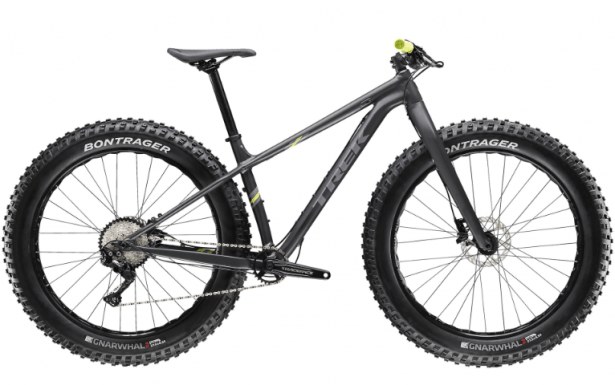
Lightweight aluminum frames and carbon forks are commonplace making these bikes light and comfortable enough to race if you so wished.
The Trek Farley 5 retails for $1779 and comes with larger than usual 27.5” wheels with 4.5” wide tires making it the monster truck of the fat-bike world.
A Shimano 1×10 (28 teeth at the front and 11-42 at the back) drivetrain means that you have a reliable system with plenty of easy gears for difficult terrains like snow or sand. There are five separate sizes to suit most riders from Small to 2XL.
The bike is ready-made for upgrades if you enjoy the ride with dropper seat-post compatibility and the option for a tubeless tire setup to allow even low tire pressures for the best grip.
2019 Fatboy SE or 2020 Fatboy
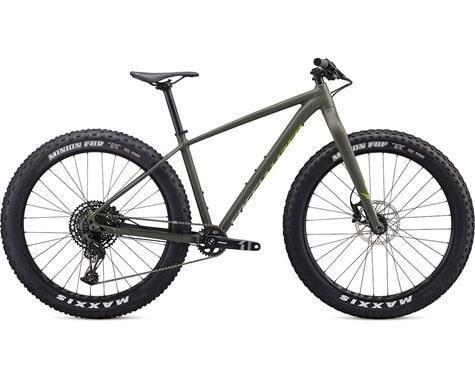
Another company that has positioned bikes in the sweet-spot is Specialized who offers the 2019 Fatboy SE at $1499 and the 2020 Fatboy at $1875.
These two bikes offer essentially the same frame which is a lightweight aluminum frame with excellent build quality which shows with features like the smoothed welds and the forged bottom bracket.
The differences come in the spec of these two bikes and Specialized seem to have pivoted to target a different audience in 2020. The 2019 Fatboy comes with a lower price point, quality cable operated disk brakes, an aluminum fork, and extremely large 4.6” tires mounted on 26-inch wheel size.
This bike is well suited to the adventures of heavy sand or snow but is less suitable for the weekend adventurer looking at fat-bikes. The 2020 bike in comparison is priced $375 more but comes with hydraulic brakes, carbon fiber fork, and much narrower 3.8” tires. The drivetrains between these bikes also tell a tale of a changing target market.
The 2019 bike is equipped with a 10-speed drivetrain with a range of 11-42 teeth. The 2020 bike, however, comes with a 12-speed drivetrain and a much wider 11-50 tooth range and most importantly larger 27.5-inch wheels.
Both of these bikes are well made but the advantages of the 2020 bike make the 2019 Fatboy almost impossible to recommend due to the fact that if it is used in the terrain its best suited for (sand and snow), the narrow gearing does not match what the rider will inevitably need.
If you have the choice here, consider the more modern bike as one year has made a lot of difference in the spec for the small additional outlay.
Salsa Mukluk SX Eagle
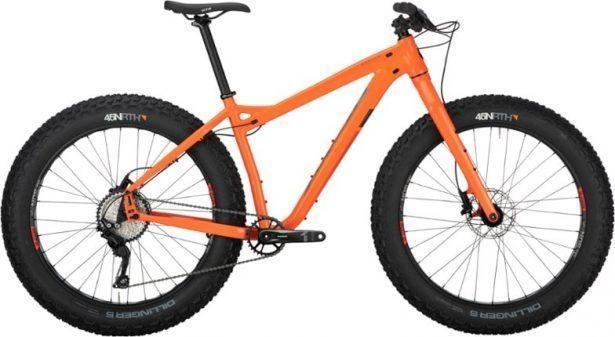
If you want something a little different from the large manufacturers (like Trek and Specialized) then consider the Salsa Mukluk SX Eagle which tops out the high budget bikes at $1999 but has some considerable strengths for those into the fat adventure biking scene.
The Mukluk gives you a quality aluminum frame with an excellent carbon fork as do the others here but the Mukluk has a specific audience in mind. Those who like to carry things, LOTS OF THINGS! The bike offers mounts for every conceivable attachment and multiples of each.
The fork has six mount points(2 sets) for extra cages or specific bags and the frame has an extra three sets.
The frame also offers an adjustable rear axle that can accommodate the use of hub gears. The 4.8” wide tires tell the rest of the story we need to understand that the Mukluk is for those going out into the wilderness on a fat-bike, those attempting winter races or those traveling through most inhospitable places on the planet.
Go for the Mukluk if your hero is Sir Ranulph Fiennes and you plan to grow an extremely long beard.
High budget $2000-$3000
Salsa Beargrease Carbon Deore 11

The Salsa Beargrease Carbon is a high-end, full carbon fat bike with enormous 27.5 inch tires. It is priced by the manufacturer at $2,899 and this bike was designed with racing and touring in mind with frame and fork mounting options for equipment on long distances and extra water for racing too.
This bike weighs in at just under 14 kilos, which is less than some full suspension bikes. It sports Shimano Deore 11-speed, great for tough climbs and has plenty of range for flat-out descending.
The 4 inch tires provide great traction over soft surfaces like sandy beach or snow, making it an excellent winter bike for colder climates. The bike comes stock with wide Race Face bars, Tektro hydraulic disc brakes and Sunringle wheels, so on paper a capable machine.
Fatboy Comp Carbon
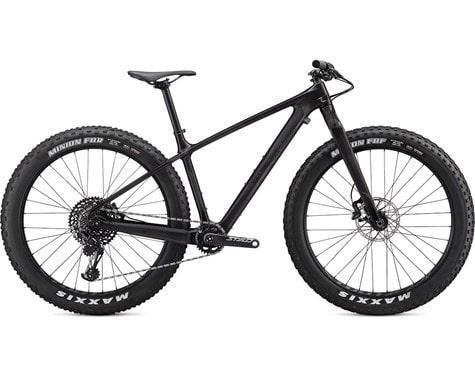
Specialized offers a carbon version of their fat-bike named the 2020 Fatboy Comp Carbon that retails for $2949.
The additional $1074 you would be paying over the cheaper model gets you a host of upgrades, most importantly the jump into a carbon fiber frame.
The benefit here is that the frame is lighter and offers more comfort and more stiffness with little operational downside other than the price.
Other upgrades are seen in the groupset which is a lighter and higher quality set. The wheels are similarly upgraded but the geometry and sizing remain exactly the same.
Salsa Beargrease Carbon NX
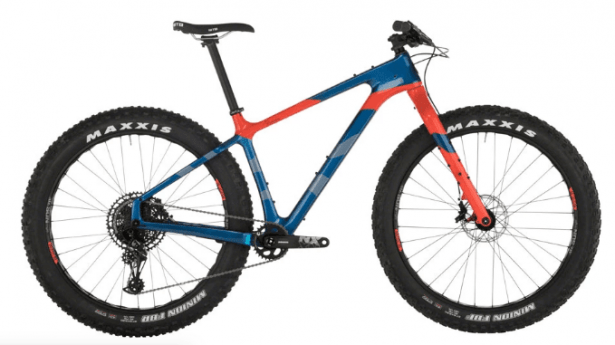
Fighting for the same market place we have the Salsa Beargrease Carbon NX costing $2899. This bike offers many of the same features as the Fatboy with a carbon frame and fork, upgraded drivetrain and wheels over the Salsa Mukluk.
The Beargrease offers even more mounts than the Mukluk and a more sporty geometry which may suit those looking to race or compete.
There is little difference between the Specialized and the Salsa in terms of spec so decisions should be based on the frame and the intended use alone.
The Specialized for casual riders and the Salsa for the adventurer as with the cheaper bikes.
Ultra bikes $3000 +
There aren’t many downsides to bikes in this category if you can afford them. The downside would be the price but if you can afford to spend this much on a fat bike then it’s likely not an issue for you.
Trek Farley 9
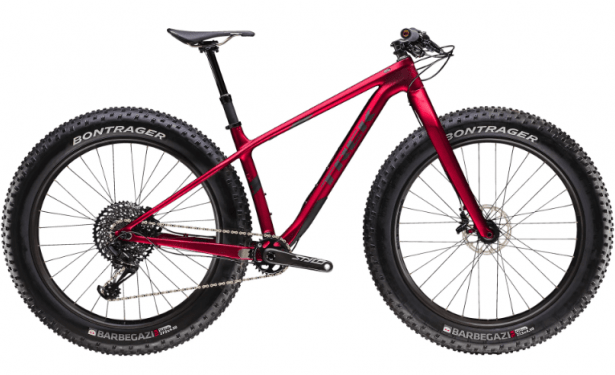
The Trek Farley 9.8 retails for $5149 and is a marvel to behold. The 9.8 is adorned with the highest range of componentry available and comes with a dropper post as standard. This is a bike made to be the lightest and fastest.
Salsa Beargrease Carbon X01 Eagle
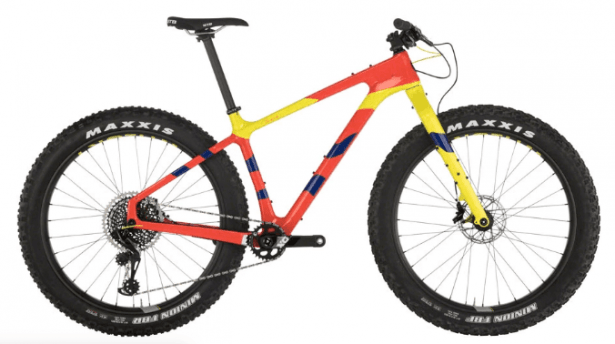
Another heavy hitter is the Salsa Beargrease Carbon X01 Eagle which despite its gaudy color choice, has a similar spec to the Trek with the only omission being the dropper post.
This omission is not due to price however but due to the dedicated adventure market that the bike aims for.
As with all Salsa bikes, this has a plethora of luggage mount points and Salsa even manufactures a specific pannier rack for their frames.
At this price-point, you should know what your intended use for the bike is and will be swayed one way or another easily. What do you require? Speed or distance?
The fat-man scoop
All of the above bikes can accept larger wheels with smaller tires so they can be used as your only mountain-bike if you purchase a spare pair of wheels.
The ride quality isn’t as good as a dedicated small tire bike but it can be a good way to own a fat-bike when you don’t have the space for another bike.
To sum up this long list of bikes and components. Those looking for casual fat-biking should consider the Specialized Fatboy range or the Mongoose Argus.
Those seeking adventure should be directed to the Salsa range and those looking to race should consider the Trek Farley or Salsa Beargrease.
If you want to show off with extreme size and silliness then the Diamondback Tres offers the biggest badest fat-bike around.
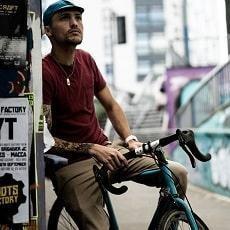
My name is David Mckinven AKA Wheels of Karma. Bikes have been my life and have taken me to rural Africa as a bike mechanic teacher, Dubai as the SBC workshop manager and to work for as long as I care to remember.
I have written for Cyclist magazine and a host of online publications. I truly believe that bikes can save our planet and that small changes will make all the difference.



